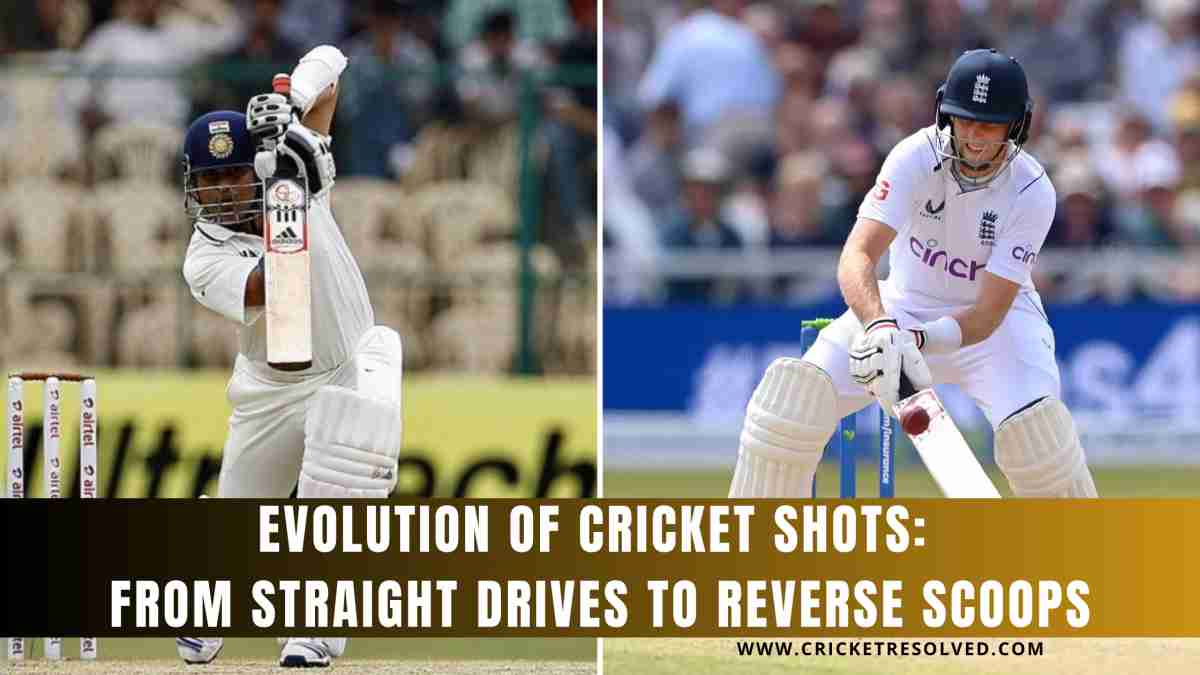
Cricket, a game that has the closest semblance to human life, has evolved significantly over the years, transforming from its traditional roots into a modern spectacle of power, innovation, and entertainment.
The game has undergone a revolutionary journey, with players pushing the boundaries of creativity and strategy, giving birth to audacious strokes like the reverse scoop.
This article delves into the transformative journey of cricket shots, exploring how the game’s dynamics have shifted from classic straight drives to unconventional reverse scoops.
Traditional Elegance: The Art of Straight Drives
In the early days of cricket, the emphasis was on technique, precision, and elegance. Batsmen were known for their textbook-perfect straight drives, showcasing the mastery of timing, footwork, and balance.
The likes of Sir Donald Bradman, Jack Hobbs, and Sunil Gavaskar were celebrated for their ability to grace the cricketing arena with exquisite shots that flowed effortlessly down the ground.
Also Read: The 10 Greatest Batsmen of all Time in Cricket
The straight drive, a shot played with a vertical bat, epitomised the quintessential style of cricket that was upheld for decades. As the game evolved, the balance between technique and innovation began to shift, giving birth to new strokes that challenged conventional norms.
The Age of Innovation: Enter Unconventional Shots
Cricket witnessed a paradigm shift in the latter part of the 20th century with the rise of limited-overs formats, most notably One Day Internationals (ODIs) and Twenty20 (T20) cricket. These formats demanded faster-paced gameplay, leading to the emergence of audacious and innovative shots.
Batsmen like Vivian Richards and Adam Gilchrist introduced the concept of power-hitting, while the likes of Kevin Pietersen and AB de Villiers added a touch of creativity to their batting repertoire.
The scoop shot, a precursor to the reverse scoop, made its appearance during this era. The batsmen began to use the pace of the bowlers to their advantage, delicately lifting the ball over the wicketkeeper’s head.
Douglas Marillier, a Zimbabwean international, made this shot famous in the early 2000s through the adept application of the same in a few ODIs against Australia and India. This shot was a testament to the changing dynamics of the game, where batsmen started to explore uncharted territory in pursuit of runs and entertainment.
The Advent of the Reverse Scoop
As cricket entered the 21st century, the sport continued its evolution towards even more innovation and spectacle. This led to the birth of the reverse scoop, a stroke that defied traditional cricketing logic.
Initially regarded as a high-risk, low-reward shot, the reverse scoop required players to switch their stance and manipulate their wrists to guide the ball behind the wicketkeeper. The shot’s audacity lay in its unpredictability, leaving fielding sides baffled and bowlers grappling for effective strategies.
Players like AB de Villiers, Glenn Maxwell, and Jos Buttler became pioneers of the reverse scoop, demonstrating that innovation and skill could triumph over convention. The reverse scoop embodied the essence of modern cricket, where players pushed the boundaries of what was considered possible, captivating audiences and redefining the art of batting.
This audacious style of play makes Suryakumar Yadav special. How? Read the article to find your answer
Also Read: What sets Suryakumar Yadav Apart From the Rest?
The Influence of Technology and Fitness
The evolution of cricket shots from straight drives to reverse scoops cannot be discussed without acknowledging the role of technology and fitness. The introduction of high-speed cameras, Hawk-Eye technology, and in-depth analysis tools allowed players to study their techniques in granular detail.
Batsmen could now identify areas for improvement, refine their shots, and adapt their game according to the situation and opposition. Moreover, the game’s physical demands evolved as well.
Players began to focus on their fitness levels, enabling them to execute the demanding shots with precision and consistency. A blend of athleticism and innovative shot-making became the hallmark of modern cricket.
The Impact on Bowlers and Strategies
As batsmen embraced new shots like the reverse scoop, bowlers found themselves facing unprecedented challenges.
The conventional line and length that were once the bedrock of bowling strategies were no longer enough to contain the audacious strokeplay. Bowlers had to constantly evolve, developing variations, slower deliveries, and deceptive changes of pace to keep batsmen guessing.
Also Read: 21+ Types of Bowling in Cricket: A Comprehensive Guide
Field placements and captaincy strategies also transformed as teams grappled with the need to counteract the unorthodox shots. The game of cat and mouse between bat and ball intensified, leading to a captivating dynamic that kept spectators on the edge of their seats.
Final Words
The evolution of cricket from its traditional roots of straight drives to the advent of reverse scoops is a testament to the sport’s resilience, adaptability, and enduring appeal. As players continue to push the boundaries of what is possible on the cricket field, the game thrives on a delicate balance between tradition and innovation.
While the straight drive continues to symbolise the elegance and technique that cricket was built upon, the reverse scoop represents the daring spirit of modern cricket. The game’s journey from the classics to the contemporary showcases the human capacity for creativity and the relentless pursuit of excellence, ensuring that cricket remains a captivating spectacle for generations to come.









1 thought on “Evolution of Cricket Shots: From Straight Drives to Reverse Scoops”